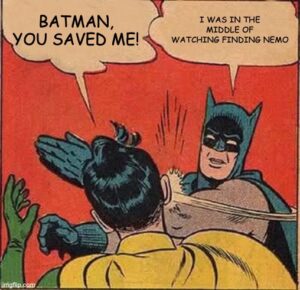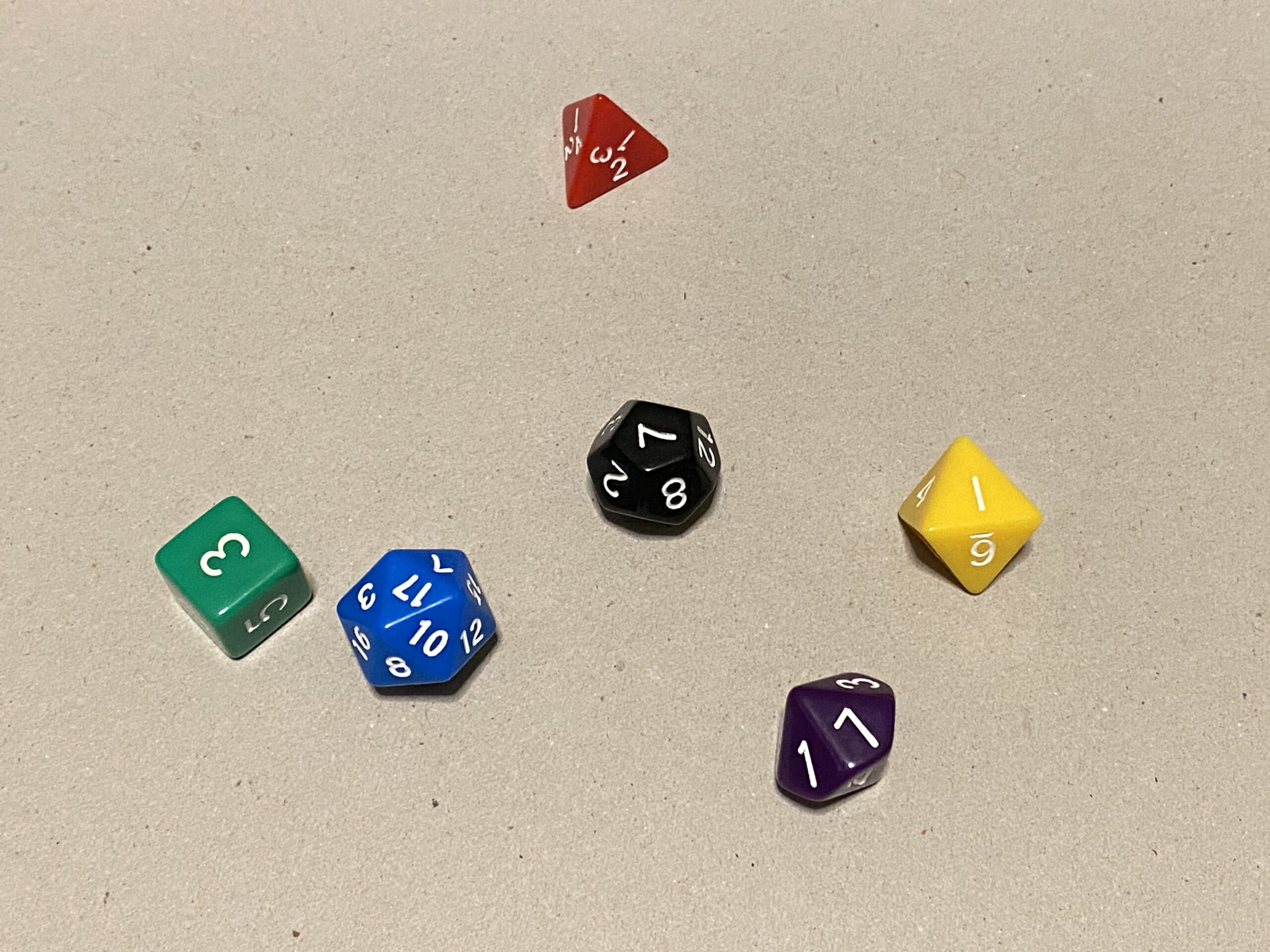Players and GMs have fretted for decades about worldbuilding, backstory, voices, character death, and so many other details about playing roleplaying games. However, I suspect that most GMs haven’t thought twice about how they roll dice and, specifically, how they narrate and prompt for dice rolls.
I’m not saying that you’re rolling dice wrong, but let me provide some examples about how you might roll differently. To start, here’s a typical exchange.
Player: I want to climb the wall.
GM: Make a Strength check.
Player: *fishes for d12s and rolls* That’s a… *mental addition* 16 plus… *looks on their character sheet* 2, so 18 with Hope.
GM: That’s a success. You start climbing when a brick starts to crumble, but you have no problem finding a new hold and getting to the top. Mark a hope.
That is normal and inoffensive, but here are two alternatives. First, narrate up to the moment of uncertainty.
Player: I want to climb the wall.
GM: You start climbing when a brick starts to crumble. Make a Strength check to see if you can hold on.
Player: *fishes for d12s and rolls* That’s a… *mental addition* 16 plus… *looks on their character sheet* 2, so 18 with Hope.
GM: You have no problem finding a new hold and getting to the top. Mark a hope.
Second, calculate the needed roll first.
Player: I want to climb the wall.
GM: You’re going to need to make a Strength check with difficulty 15. What’s your Strength?
Player: *looks on their character sheet* +2
GM: You need to roll a 13.
Player: *fishes for d12s and rolls* That’s a… *mental addition* 16 with Hope.
GM: You start climbing when a brick starts to crumble, but you have no problem finding a new hold and getting to the top. Mark a hope.
And you can combine both of these approaches. Let’s go through the differences and why I think these create more suspense in TTRPGs and fun at your table.
What is suspense?
Suspense is that feeling of excitement in a moment of uncertainty. Can the Giants rally to win before time runs out? Who will be the last person standing in the battle royale? Will Batman save Robin?
Well, maybe there’s no uncertainty in that last one, but you get the idea.

Specifically to TTRPGs like Daggerheart, uncertainty about a player’s action is resolved by rolling dice, so suspense exists between the GM calling for a roll and finding out the result.
So how can this be done correctly or incorrectly?
The best path of creating and resolving suspense is to
- leave the dramatic question hanging for as long as possible
- resolve the action as quickly as possible
You can accomplish the first by re-organizing your narration and the second by doing math ahead of time. Let’s go through it.
Narrate up to the moment of uncertainty
Typically, a GM will call for a roll as soon as a player announces their action. I think this is too early: there’s usually some setup, but the narration feels more like fluff when you already know what the result is. Compare:
Roll to attack. *player rolls a 7 with hope* You drive the cutpurse back with a series of stabs trying to land a blow, but they deftly avoid all of them
with
You drive the cutpurse back with a series of stabs trying to land a blow. Roll to attack *player rolls a 7 with hope*. Unfortunately, they deftly avoid all of them
In the first example, the player probably already figured that they missed after rolling. The GM narration is filler while the players have mentally moved on.
In the second example, the narration starts, then pauses while the player rolls. The GM setup the moment, and then physically rolling works as a mini-cliffhanger.
Note that between the two examples, the words are all the same: it’s just a different order.
(For more on this, see my much older blog post covering the same topic)
Know the modifiers ahead of time
(This tip doesn’t count because it’s literally in the rules.)
Games run more smoothly when you don’t have to look anything up. I love that Daggerheart has easily accessible, rules-medium description of abilities and spells. It isn’t so complicated to require hundreds of pages in a rulebook, and it isn’t so open-ended to require lengthy interpretations at the table.
This same dynamic applies to rolling dice, too. It kills me when a player rolls, then searches their character sheet for their modifier and relevant abilities or effects.
In fact, Daggerheart directly addresses this with clever design, which I also suspect many people overlook:
The acting player decides whether to Utilize an Experience or activate other effects, then, if applicable, adds the appropriate tokens and dice (such as advantage or Rally dice) to their dice pool.
The Limited Edition came with a pile of tokens, and even without the Action Tracker, they aren’t pointless. You’re supposed to physically roll the tokens with your dice. This act does two subtle things:
- It forces the player to look up your modifiers first
- It makes it easier to do the math
So if you choose not to follow the actual tip in the next section, you should at least follow the rules by grabbing tokens.
Calculate the difficulty
Why are critical successes so exciting? There are three main components:
- For the players, things are going really well
- It’s relatively unlikely
- Everyone knows as soon as it happens
For non-cries, there’s not much you can do about the first two. However, you can do something about that third point. It’s more exciting when the players instantly know if a roll is successful or not. And for the most part, I think that GMs should tell players what the difficulty is beforehand.
Then, you can subtract the modifiers to calculate the actual target number on the dice is. Subtraction isn’t popular, but it’s good for you.
And I think it feels better, too. In those key moments when everyone is leaning over the table to see the dice, you want them to know immediately if it worked instead of getting into math or waiting on you.
It also keeps GMs honest. I have called for rolls before setting the target difficulty or establishing. I just let players roll first and resolved the action roughly based on how big the number was. Stating the difficulty is the same as players checking their modifiers first.
Final thoughts
Putting both tricks together, here’s how I might try to narrate the situation.
Player: I want to climb the wall.
GM: You start climbing when a brick starts to crumble. You’re going to need to make a Strength check with difficulty 15 to see if you can hold on. What’s your Strength?
Player: *looks on their character sheet* +2
GM: You need to roll a 13.
Player: *fishes for d12s and rolls* That’s a… *mental addition* 16 with Hope.
GM: You have no problem finding a new hold and getting to the top. Mark a hope.
These two little trick will not fix your game. However, if you feel like the pacing of your game is off, or you want a little more drama and energy around the dice, you might try these techniques out. It doesn’t seem like much, but it also isn’t that much effort. It can easily become second nature.
One More Thing…
Barring unforeseen disaster, I will be at Gen Con this year! I’m running the Dying Spire adventure with Darrington Press. Feel free to reach out if you’re interested in meeting up!

Leave a Reply